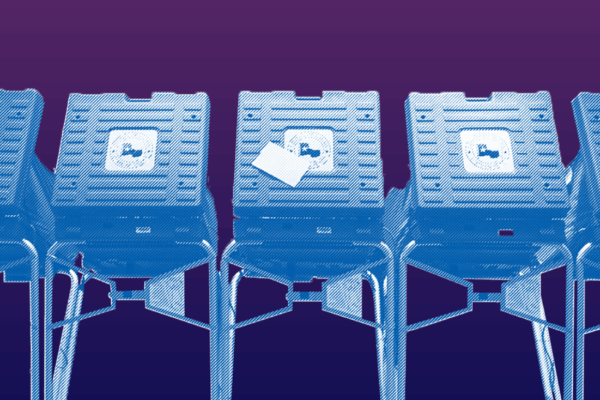My mom voted for the first time in 2016 and has since become the most enthusiastic voter I know. We voted early last week, and it was another delight. Every election worker becomes her friend, she exchanges life stories, and makes plans to come back at the next election.
Voting in person should always be this type of joyous experience—a celebration of democracy where neighbors and communities come together, kids tag along with parents year after year, and election workers provide helpful guidance and a beloved “I voted” sticker. More than likely your visit to a polling station will go just as smoothly as my mother’s experiences. However, recent reports of voter intimidation near ballot boxes in the U.S. have garnered widespread attention. During the 2020 election, there were hundreds of reports of voter intimidation in Texas, and federal authorities have issued warnings about potential violence around the ongoing election.
Voter intimidation is illegal, and governments are required to protect voters. Any incident of voter harassment is unacceptable. During the ongoing election, county officials, election workers, and voters must know how to identify it and protect the robust right to vote free of intimidation.
Know Your Rights
Unlawful voter intimidation includes anything that intends to or has the effect of intimidating voters. This can include carrying firearms at or near a polling location, aggressively questioning voters about their qualifications related to citizenship or criminal records, displaying misleading information about voting, and harassing non-English speakers or voters of color.
In Texas, it is unlawful to loiter or electioneer within 100 feet of a polling place, which can include displaying political signs, badges, or hats. Loudspeakers cannot be used for political speech within 1,000 feet of a polling location. Abuse or threats in a public place and threats against somebody with the intent to harass are illegal under state law. And it is specifically illegal to harm or threaten someone in retaliation for voting against a political candidate. State law outright prohibits carrying a firearm on the premises of a polling place.
Poll watchers are appointed by political parties and candidates, and they must wear badges identifying themselves as appointed poll watchers. They are permitted to observe election activities throughout a polling site and observe election workers when they assist voters, but they cannot have anything with them that records images or sound. Poll watchers are explicitly forbidden from speaking with or harassing voters. They cannot be present at a voting booth while someone is casting their ballot.
Addressing Voter Intimidation
Instances of voter intimidation must be promptly addressed by election officials and county governments. Counties, who run these elections, have an obligation to enforce protections against voter intimidation. Governments cannot look the other way while private parties threaten to intimidate voters.
Counties should have procedures in place for firmly and promptly telling people that they must stop engaging in unlawful voter intimidation. There should be communication and training plans available to election workers and other responders about how to identify and de-escalate instances of intimidation.
Voters who encounter intimidation should report it to an election worker or their county. They can also report voter intimidation to 1-866-OUR-VOTE, a voter protection hotline run by a coalition of Texas voting rights groups.
Voter intimidation must always be addressed and eliminated, so that elections can be a celebration and voters can safely cast their ballots. Election Day is Tuesday, November 8th. Take a friend (or your mom) and go vote.


